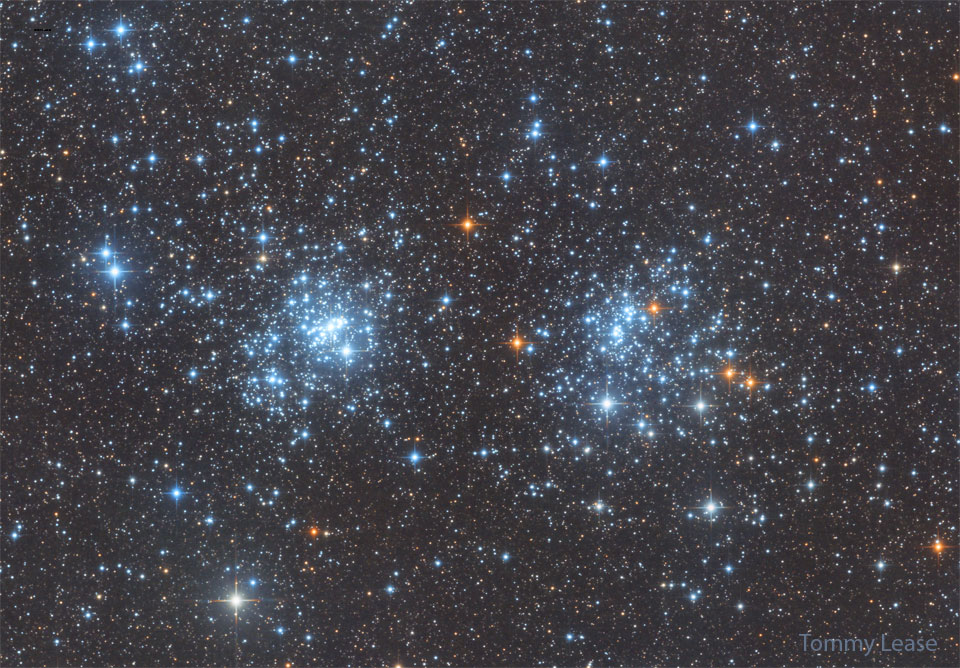2022年11月22日
A Double Star Cluster in Perseus
Image Credit & Copyright: Tommy Lease
Explanation: Few star clusters this close to each other. Visible to the unaided eye from dark sky areas, it was cataloged in 130 BC by Greek astronomer Hipparchus. Some 7,000 light-years away, this pair of open star clusters is also an easy binocular target, a striking starfield in the northern constellation of the mythical Greek hero Perseus. Now known as h and chi Persei, or NGC 869 (above right) and NGC 884, the clusters themselves are separated by only a few hundred light-years and contain stars much younger and hotter than the Sun. In addition to being physically close together, the clusters’ ages based on their individual stars are similar – evidence that both clusters were likely a product of the same star-forming region.
Tomorrow’s picture: pixels in space
英仙双星团
图像提供与版权: Tommy Lease
说明: 鲜少有星团会靠彼此如此之近。远在公元前130年,就已被希腊天文学家依巴谷所编录的这对疏散星团,从有幽暗天空的地点肉眼即可见。以希腊神话英雄柏尔修斯(Perseus)为名、离我们约7,000光年远的这对星团,是北天英仙座内极吸睛的星场,更是用双筒望远镜观星的好标的。现名为英仙座h与chi双星团的NGC 869(右上)和NGC NGC 884,二者相隔仅数百光年,而且其内部的成员星远较太阳年轻及炽热。它们在空间上除了靠得很近之外,根据成员星所断出的这对星团的年龄也很相近,因此,这二个星团很可能诞生于同一个恒星形成区。
明日的图片: pixels in space



